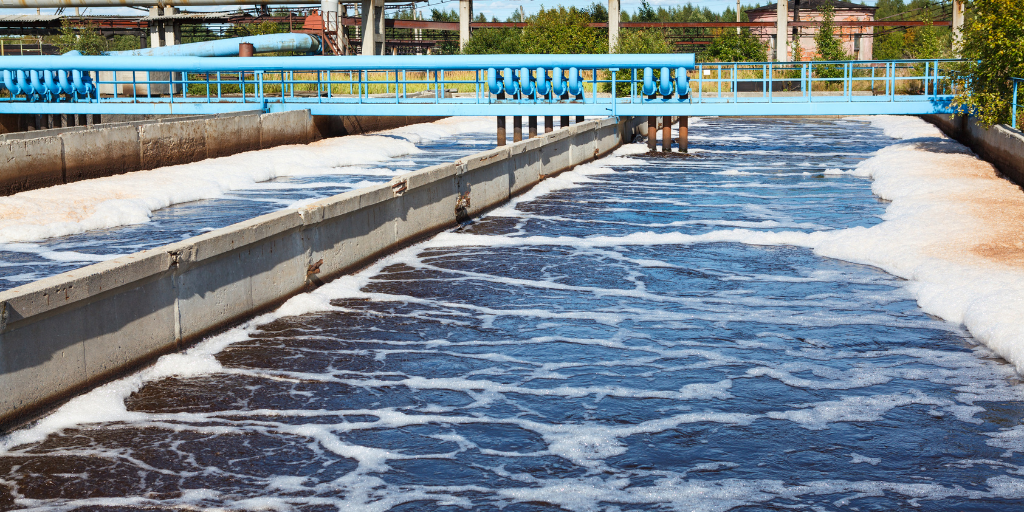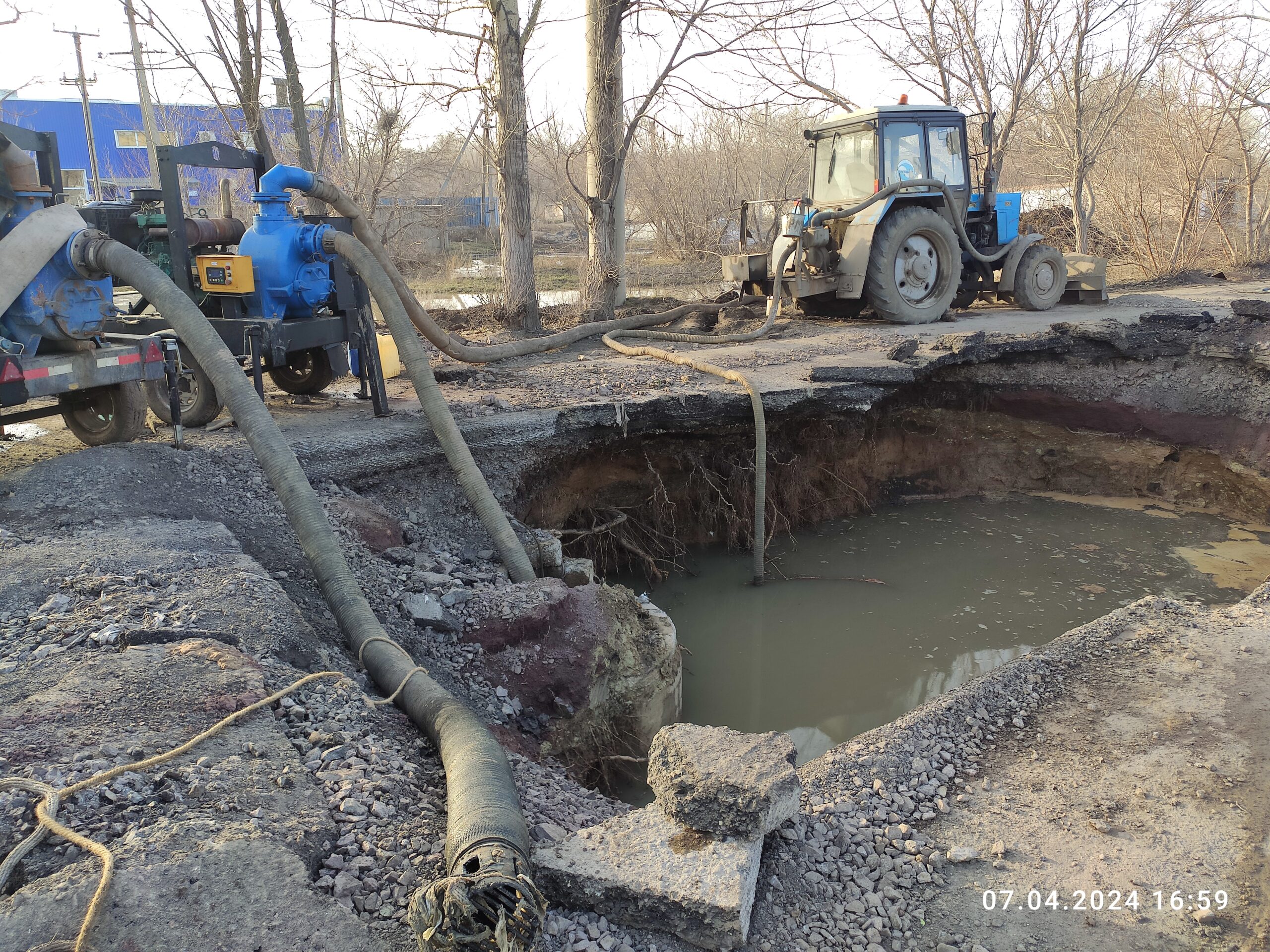Residents of Karaganda, a major industrial city in central Kazakhstan, originally welcomed plans to modernise the larger of its two wastewater treatment plants with the help of a loan from the European Bank for Reconstruction and Development (EBRD). However, the design of the project – revealed during public hearings – has prompted significant concerns among both citizens and experts. Over the past year, a local civil society organisation has been advocating for a review of the design, highlighting technical flaws and violations of stakeholder engagement obligations.
Anna Andreychuk, environmental activist, Kazakhstan, Polina Veretelnikova, CEE Bankwatch Network | 24 April 2025

Project capacity under scrutiny
The Karaganda wastewater treatment plant modernisation project – a EUR 100 million initiative backed by the Kazakh government – is set to be approved by the EBRD’s Board of Directors on 7 May 2025. The project involves the construction of a new wastewater treatment plant, the modernisation of the existing sewage pumping station, and the installation of sludge treatment facilities. However, the planned capacity of the plant has become a focal point of criticism.
The project’s environmental impact assessment specifies a maximum daily treatment capacity of 130,000 cubic metres, which local activists claim is insufficient. For context, the city’s existing sewage treatment plant has a daily capacity of 232,000 cubic metres. Municipal water utility Karagandy Su, the EBRD client on the project, claims that the actual daily wastewater throughput ranges from 70,000 to 160,000 cubic metres depending on the season, peaking at 190,000 cubic metres during the spring flooding period.
According to the city’s 2007 master plan, the daily wastewater inflow in 2005 was 202,360 cubic metres at a time when the city’s population stood at 446,000. Today, the population stands at 525,300 and, based on the 2025 strategic environmental assessment report for the soon-to-be revised master plan until 2040, is projected to reach 570,000 by 2030 and 650,000 by 2040. Much of this growth, driven by extensive residential development, is expected to occur in the southeastern parts of the city – the same districts the new facility is expected to serve.
Locals also warn that the capacity estimates fail to account for significant water losses caused by severe degradation of the sewerage system, which requires extensive rehabilitation. In 2023 alone, Karagandy Su reported 19,580 clogs in the sewerage network, with 84 per cent of the system in a state of deterioration. Residents routinely report sewage leaks both within and outside the city.

Violations of public hearings laws
Citizens first voiced their concerns in January 2024 during public hearings on the project’s environmental impact assessment. According to project monitors, fewer than 10 of the 72 questions submitted by the public were marked as ‘withdrawn’ in the official hearings protocol, with more than half of the questions designated as unresolved or given an ambiguous response.
This, according to the Centre for the Introduction of New Environmentally Safe Technologies (CINEST), a local public organisation monitoring the project, is a direct violation of Kazakhstan’s legislation on conducting public hearings. This law states that in cases where comments and proposals submitted by interested state bodies or the public are marked as ‘not withdrawn’ in the public hearings protocol, the project proposer must revise the draft report accordingly.
Despite having flagged these violations with the Committee for Environmental Regulation and Control and other departments within the Ministry of Environment and Natural Resources, local monitors have yet to receive a clear response as to why their legitimate concerns have not been addressed.
Nor has the project been revised in line with public input. In accordance with legal requirements, all clarifications requested by residents should be reflected in the environmental impact assessment. As things stand, given concerns about the reliability of the data provided in the existing assessment, the proposed capacity may not be sufficient to meet the city’s current and future needs, potentially posing severe environmental risks.
High-risk project design
As the EBRD board prepares to approve the project, Karaganda is bracing itself for its annual spring flooding season. Residents remain concerned about the risks posed by poorly managed rain and flood waters, especially during peak periods, which could directly affect the new wastewater treatment plant. Currently, the city has no functioning stormwater drainage system in place, which means that all storm and rainwater either flows directly into sewage wet wells or funnels into local water reservoirs.
CINEST representatives communicated their concerns during a joint meeting between Bankwatch and the EBRD’s project team in October 2024. They were informed that stormwater management fell outside the scope of the project and was not the responsibility of the project implementer, but rather of the city administration, which would need to secure funding to resolve the issue separately.
In December 2024, the EBRD published its public consultation report on the project. It recommended that excess floodwater be managed through the use of emergency basins but provided no details on their proposed capacity. The report also noted amendments to the environmental impact assessment, including information on the city’s plans to develop a separate, closed stormwater drainage system.
However, activists point out that the master plan, published some two decades ago, also contains plans for a stormwater drainage system that never came to fruition, with little progress beyond occasional emergency repairs of burst pipes and leaks. Repeated requests by activists for access to the amended environmental impact assessment and the project feasibility studies – funded through a EUR 1 million technical cooperation grant from the EBRD – have gone unanswered.
Pressure mounts on the EBRD
The EBRD project team maintains that the current design offers the best available technical solution for handling Karaganda’s stated wastewater volumes and points to the city’s plans to upgrade the remaining outdated infrastructure. However, monitors have found no concrete evidence of coordinated local schemes to modernise associated infrastructure critical to the project’s success.
With Karaganda’s population on the rise, existing treatment capacity will soon prove insufficient, requiring either a substantial upgrade or the construction of a second facility. Yet without a comprehensive municipal plan to integrate long-term wastewater treatment requirements, repair existing dilapidated sewerage channels, and establish a functioning stormwater drainage system, the new treatment plant is likely to become a wasted investment.
More alarmingly, the continued disregard for public concerns in the decision-making process undermines community trust in development funding, particularly for high-risk projects such as this. Activists insist the design must be amended to include greater treatment capacity or, at the very least, condition a coherent city plan for modernising stormwater infrastructure and complementary treatment facilities. Failure to do so risks hazardous overflows, with potentially grave environmental consequences for Karaganda residents.
Never miss an update
We expose the risks of international public finance and bring critical updates from the ground – straight to your inbox.
Institution: EBRD
Theme: wastewater |
